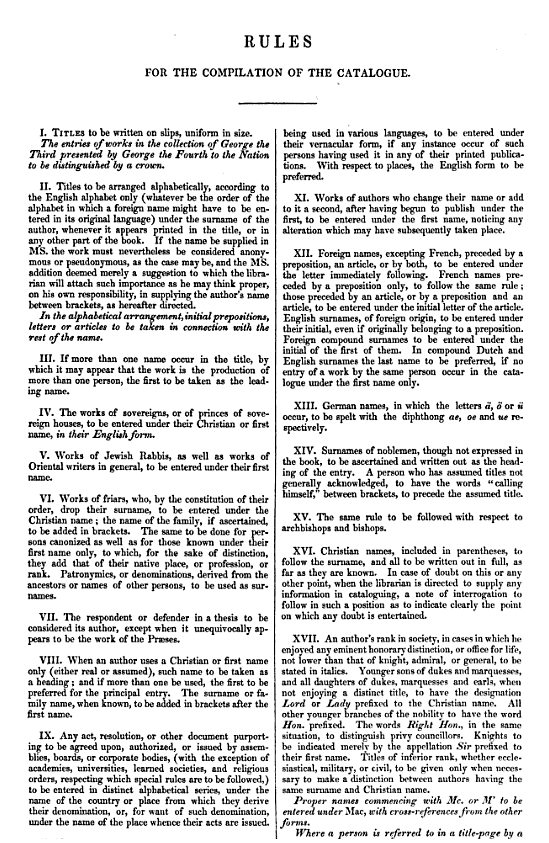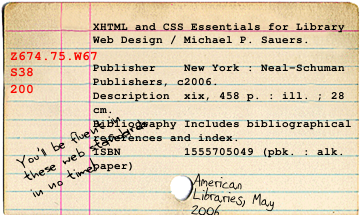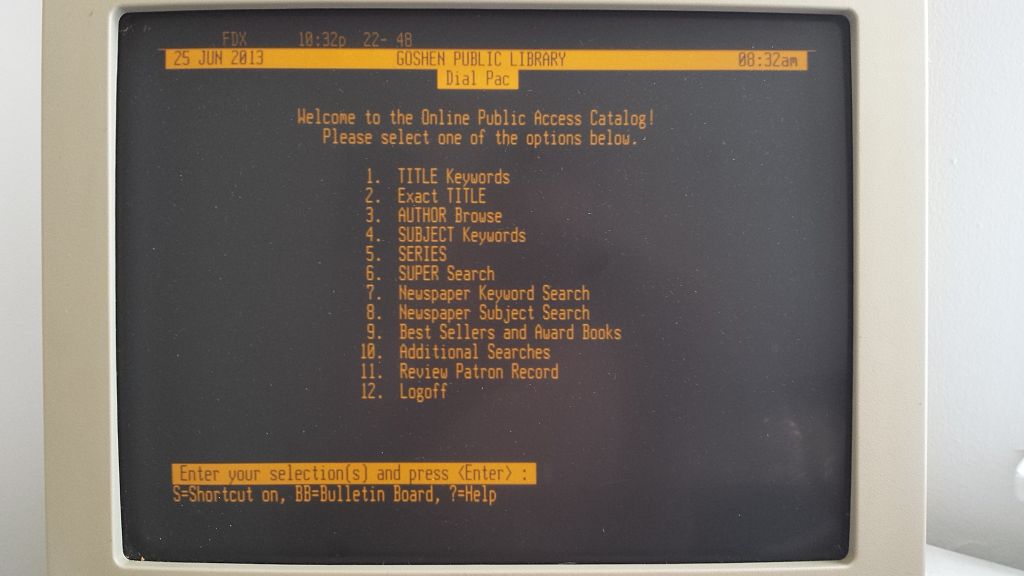1790s
1841
Sir Antonio Panizzi publishes 91 Rules for Standardizing the Cataloguing of Books for the British Museum (now Library).

1876
Charles Cutter publishes first edition of Rules for a Printed Dictionary Catalogue that defines three objectives of a library catalog:
- Identifying (person can find a book by author, title, subject, and date of publication)
- Collocating (show what books a library has by a given author, subject, and kind of literature)
- Evaluating (book edition and its character)
Melvil Dewey (of Dewey Decimal fame) Director of New York State Library founds the Library Bureau company that sells 3x5 catalog cards to fit new standardized card catalog cabinets that he patented and sold through his company.
1901
Library of Congress starts selling author, title, and subject cards for purchase by libraries

1960s
MARC format for bibliographic electronic records for exchanging collection information between libraries created at the Library of Congress by Henriette Avram.
1980s
Development of first Integrated Library Systems (ILS) accessed through dedicated terminals.

1989
Sir Tim Berners-Lee invents the world wide web at CERN
1994
Amazon founded as a primary online book-store, very influential in people's User Interface expectations for finding books online.

1998
Google Inc. founded in Menlo Park, search experience becomes the norm for most users, directly influences users expectations for library catalogs.

2001
Sir Tim Berners-Lee introduces the term Semantic Web in an influential article of the same name.
2000s
Library Vendors and Open Source "Discovery Layers" provide Amazon and Google "like" search technologies that link to legacy ILS systems in libraries.

2010s
Mobile Apps and interfaces to Libraries Catalog becoming more popular and necessary for libraries.
2011
Library of Congress annouces a new linked-data replacement for MARC that eventually becomes the RDF vocabulary BIBFRAME.
